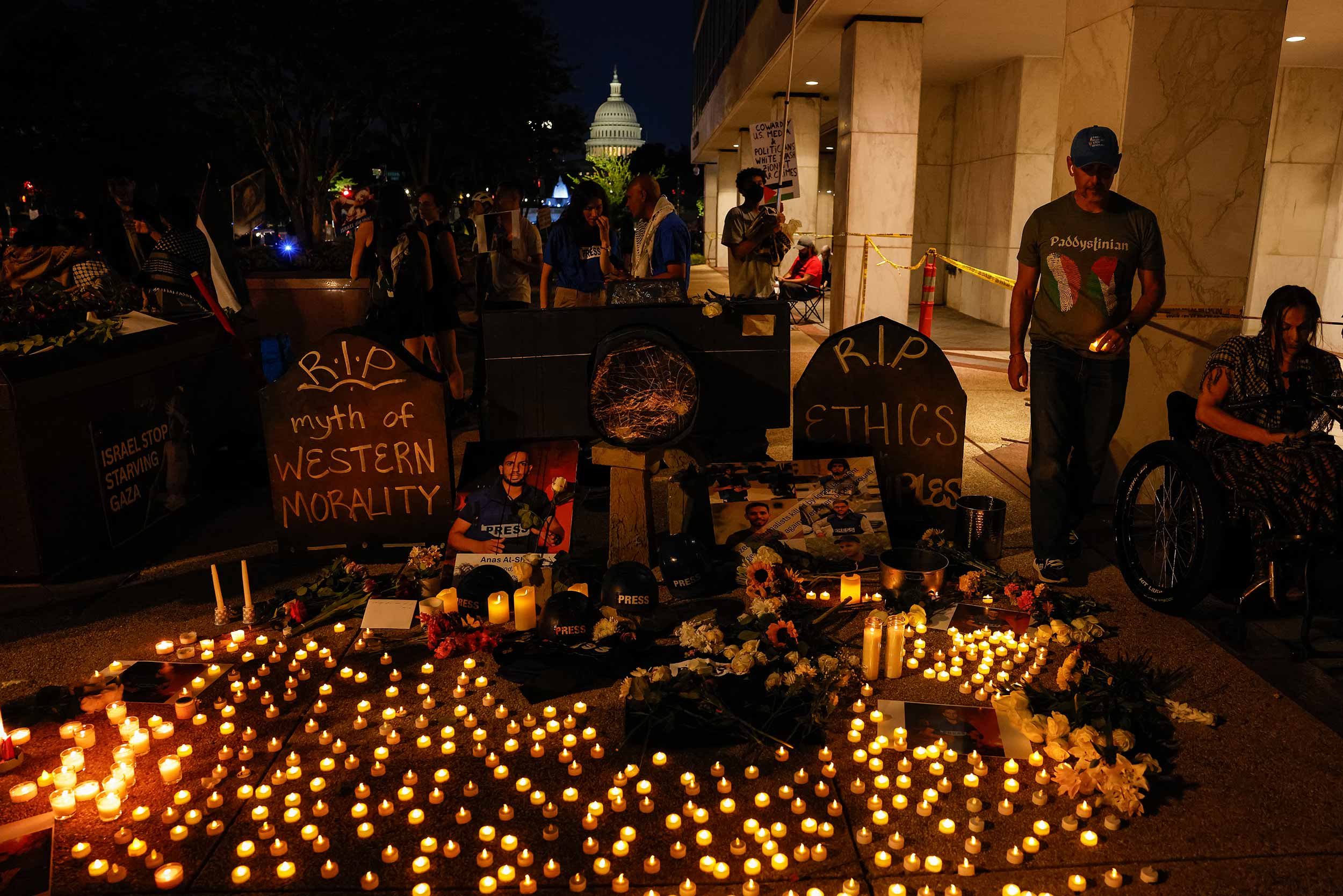Dying for the Truth
Despite overwhelming international condemnation, Israel continues to try to maintain an information vacuum in Gaza.
Local journalists are living the war in Gaza – and dying for it. Israel’s assault on Hamas reached another milestone with the killing of a leading Al Jazeera reporter.
Anas al-Sharif, 28, was killed alongside five other Palestinian journalists on August 10 in a missile strike on a media encampment outside Al-Shifa Hospital in Gaza City.
The incident demonstrates not only the brutality of Israel’s campaign but also the severity of the information divide. Al-Sharif – one of Gaza’s best-known reporters – was lauded for courage and commitment by one side and accused of terrorism by the other.
“Anas gave Palestinians a voice that they trust, telling them what was happening in their neighbourhoods, in their streets, in the hospitals.”
With international media barred from the territory, Palestinian voices have been left with the sole burden of bearing witness against unimaginable obstacles.
“Anas gave Palestinians a voice that they trust, telling them what was happening in their neighbourhoods, in their streets, in the hospitals,” Taghreed El-Khodary, a freelance journalist and former New York Times Gaza correspondent, told IWPR.
“He gave Palestinians a sense of voice – and a sense of connection if they've left. If they're still in Gaza, he gives them a platform to talk about things like killings but also starvation, which he experienced himself.”
Indeed, al-Sharif reported on destruction and displacement, but also on experiences he personally shared, from extreme hunger to open sorrow. In one notable broadcast, he broke down when confronted with a roomful of bodies, dismembered from the impact of a shell blast.
“Every day, if he didn’t report, people were worried about him,” El-Khodary said.

According to the media watchdog Committee to Protect Journalists, nearly 200 Palestinian reporters have been killed in Gaza since Israel launched its war on Hamas in the wake of the October 7, 2023, attack.
Yet al-Sharif’s killing appears to mark the first time the Israeli Defence Forces (IDF) have acknowledged purposely targeting a working journalist – and in fact, celebrated the attack. On social media, it posted the one-word confirmation ‘Struck’ along with a bullseye image, alleging that al-Sharif was a Hamas operative posing as a journalist. No comments were made about the other journalists killed at the same time.
IDF spokesman Avichay Adraee posted photographs appearing to show al-Sharif with Hamas leaders Yahya Sinwar and Khalil al-Hayya.
“Only terrorists sit in terrorists' gatherings,” he wrote.
The IDF also circulated lists of what it claimed were Hamas personnel rosters, training course records, phone directories and salary documents – evidence it insisted showed al-Sharif had a military role within Hamas. A screenshot of a social media post also purported to show that he had celebrated the October 7 attacks in which some 1,200 Israelis were killed.
Under international humanitarian law, journalists in war zones are protected as civilians. They are entitled to carry out media activities, including reporting, advocacy, and even propaganda. They lose this protection only if there is credible evidence that they are directly engaged in operational, combat-related acts — a high legal threshold which these assertions and unverified online images appear well short of meeting, particularly in the absence of any formal determination. The UN Special Rapporteur on freedom of expression has dismissed the terrorist allegations as “unsubstantiated”.
Yet today’s tragedy will be overtaken by tomorrow’s, and there will be no investigation. Despite overwhelming international condemnation, Israel continues to try to maintain an information vacuum in Gaza to prosecute its war – denying international media entry to Gaza, undermining the legitimacy of Palestinian voices and now killing a leading Gazan reporter and crew.
Some journalists in Gaza have reported receiving orders from the Israeli army to stop reporting, while others – and likely their sources – will be too afraid to be identified on camera.
It is the power and veracity of first-hand witness that they try to restrict, and this was precisely the role of al-Sharif and his colleagues.
“Anas was not reporting from a tent,” recalls El-Khodary. “No, he walked around, he went here and there with a cameraman… this helped create the relationship between him and the people.”
Now he has shared the fate of so many of them.
